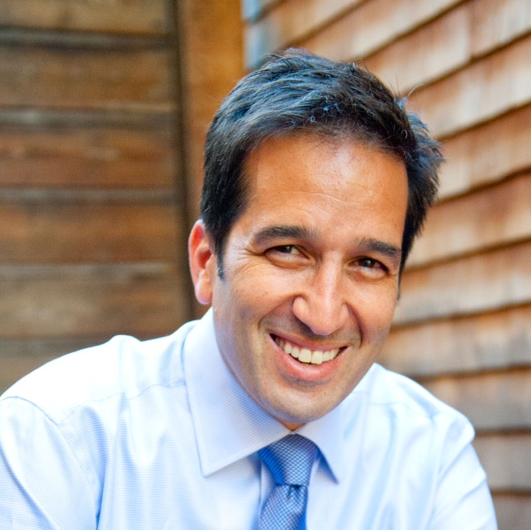We have been hearing a lot in the news lately about “surprise medical bills” and how they are impacting patients and families.
But what is surprise billing, and what can we do to fix it? Surprise billing happens when someone with private health insurance receives unanticipated care from a doctor who is not in his or her health plan’s network.

For example, a patient may do their due diligence in finding an in-network hospital for a minor emergency, but some of the doctors who provide care at that facility are not in-network. It may be that the emergency department doctors or anesthesiologists or radiologists at the hospital are not in that patient’s particular health plan, even though the hospital itself is.
While surprise billing has become the common term to describe such a scenario, a more appropriate term is “surprise insurance gap” since it’s really due to an unexpected gap in coverage. This gap creates a financial burden for patients and families and often leaves providers without adequate reimbursement for the care they provide.

Here’s how it works: the out-of-network provider sends the insurance company its charge for services provided. The insurer will reimburse a fraction of the charge, leaving the balance to be handled by the patient. The patient ends up with a bill from an out-of-network provider, often owing more out-of-pocket than they expected. Adding insult to injury, the patient’s out-of-pocket payment may not count towards his or her deductible, or at least not count as much as it would if the provider were in-network.
As hospital-based doctors, radiologists may unwittingly get caught up in this gap as well. Radiologists typically interpret imaging exams not knowing if the patient even has insurance, much less what plan they are on. Radiologists treat all patients. Unfortunately, being out-of-network means less reliable and less prompt reimbursement for the doctor. That’s one reason why the vast majority of care we provide is in-network.
The Solutions (and the Risks)
While many states are passing laws to address this problem, a federal resolution will ultimately be required. That’s because “ERISA plans” are not subject to state regulation. The Employee Retirement Income Security Act (ERISA) of 1974 deals with private employer-sponsored health plans, and these are under the jurisdiction of the federal government. These plans cover more than half of all those with private insurance.
There is broad agreement that patients who receive unanticipated out-of-network care should be held harmless. They should be limited to paying their standard in-network cost-sharing amount. But what about the remainder of the provider reimbursement? The two main ways that federal lawmakers are looking to reimburse physicians are use of a benchmark and independent dispute resolution (IDR).
The benchmark approach is akin to federal price-fixing. The government will establish a standard for out-of-network payments, but this will become the new ceiling for in-network payments. Insurance companies will cancel contracts with provider organizations if the existing contract is for more than the out-of-network benchmark. Why would for-profit companies pay more than they need to? Provider organizations with contracts above the benchmark will be pushed out-of-network or forced to accept a lower rate to be back in-network. Some provider organizations with contracted rates below the benchmark may also choose to terminate contracts and go out-of-network. The net result? More patients and doctors will be out-of-network. Additionally, many provider groups may find that they have to cut services to stay in operation. Rural and critical-access hospitals who already have razor-thin margins will be unable to compensate for the losses and may be impacted the hardest. Finally, with prices fixed, provider organizations will be less inclined to differentiate themselves by making costly investments in quality improvement initiatives. It would be harder to justify a major expense, if revenue is fixed.
The other option is IDR, which preserves market forces. With this alternative, when there is a disagreement between a provider and insurance company on the reimbursement amount, a third-party arbiter decides. This is online, fast and economical. The patient pays their in-network cost sharing amount, completing their obligation. The rest is handled by providers and insurers. New York has had such a system in place for several years, and the data to date indicate that this process protects patients, lowers the frequency of unexpected out-of-network bills, and reduces costs.
What Can You Do?
-
Get educated: There are several organizations in the radiology community that support the effort to end surprise insurance gaps and elevate the voices of radiologists, including the American College of Radiology and its Radiology Advocacy Network, along with Physicians for Fair Coverage, a non-profit organization advocating on behalf of patients and physicians.
-
Get engaged: Reach out to your legislators in Washington, D.C. and let them know how you feel. With so much at stake, let your representatives in Congress know where you stand. Use your voice to advocate on behalf of your patients and our specialty.
We need to solve the surprise insurance gap. Such a solution should keep patients out of the middle but also preserve good-faith negotiations between insurance companies and providers. We are hopeful legislators will look to IDR and states like New York for a proven solution, rather than one that puts physicians and patients at risk.
Dr. Anthony Gabriel is Chief Operating Officer and Dr. Rich Heller is the Associate Chief Medical Officer for Communications and Health Policy at Radiology Partners, a leading physician-led and physician-owned radiology practice in the U.S. For the latest news from RP, follow along on our blog and on Twitter, LinkedIn and Instagram.





